The Birth of a Foal: A Precious Moment in Time
Having been a part of over a hundred foaling events, the rush of excitement and nerves accompanying each birth remains as intense as ever. Each time a mare nears foaling, my heart races with anticipation, adrenaline surging through me. The moment her waters break, it marks the thrilling start of a new life. It’s a time of wonder, where every second is filled with eager expectancy.
As a breeder of various colored horses, those first glimpses hold special significance. The sight of tiny white hooves peeking out signals a colorful foal, while pale legs hint at a dilute shade. And the emergence of black feet and legs? It heralds the arrival of a stunning black baby. But regardless of the color – be it the vibrant shades of chestnut or bay – each foal is equally cherished, eagerly awaited, and deeply loved. This miraculous journey of birth, filled with hope and beauty, is an experience that never ceases to amaze me.
The Prelude to Birth
As a seasoned observer of equine births, I’ve come to recognize the subtle yet telltale signs heralding the arrival of a new foal. Understanding these signs is crucial for any breeder or horse enthusiast, as it helps in preparing for the foaling process and ensuring the well-being of both the mare and her offspring.
Signs of Impending Foal Birth in Mares
- Udder Development: Approximately 2-4 weeks before foaling, the mare’s udder begins to fill. This change is gradual and becomes more pronounced as the due date approaches. In the final days, you may notice the udder is fully distended, a sign that birth is imminent.
- Changes in the Vulva: The mare’s vulva becomes more relaxed and elongated in the weeks leading up to birth. This is the body’s natural way of preparing for the passage of the foal.
- Waxing of Teats: One of the most indicative signs is the appearance of a waxy substance on the teats, usually 24-48 hours before labor. This ‘waxing’ indicates that the mare’s body is making final preparations for birth.
- Behavioral Changes: Mares may show signs of restlessness, isolation, or changes in eating habits close to foaling. Some may pace, lie down frequently, or exhibit signs of mild colic due to the discomfort of early labor.
- Relaxation of the Pelvic Ligaments: Just before labor, the ligaments around the mare’s tailhead soften, giving the rump a sunken appearance. This relaxation is crucial for a smoother birth process.
The Mare’s Preparation for Foaling: Physical and Behavioral Changes
The process of foaling is both physically demanding and instinctual for a mare. As the time draws near, mares often seek a quiet, secluded space. This behavior is an echo of their wild instincts, where privacy was essential for the safety of the vulnerable newborn foal.
Physically, the mare’s body undergoes significant changes. Alongside udder development and vulva relaxation, there’s an increase in abdominal size as the foal positions itself for birth. The mare might also show signs of discomfort due to the weight and movement of the foal, leading to shifts in her gait and posture.
In these final days, the mare must be monitored closely without causing undue stress. Ensuring she is comfortable, in a safe environment, and under unobtrusive observation can make a significant difference in the ease of the foaling process. Preparing for any emergencies with a vet on call is also a wise measure, as even the most routine births can have unforeseen complications.
The prelude to birth is a period filled with anticipation and preparation, a time when a mare’s body and instincts align to welcome a new life into the world. Being attuned to these changes not only helps in providing the necessary care but also deepens our connection and understanding of these magnificent creatures.
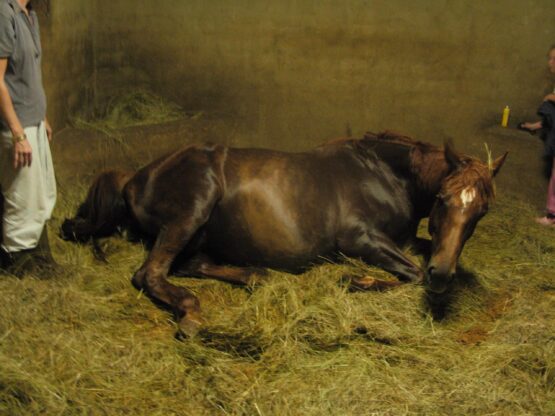
The Miracle of Birth
The birth of a foal is a captivating and intricate process, a perfect blend of nature’s wisdom and the mare’s instinctual prowess. As someone who has witnessed this marvel countless times, each birth remains a unique and profound experience. Here, I’ll walk you through the step-by-step journey of the foaling process, highlighting key moments and discussing the role of human intervention when necessary.
Step-by-Step Description of the Foaling Process
- Onset of Labor: Labor in mares is typically divided into three stages. The first stage begins with the mare showing signs of discomfort due to uterine contractions. She may appear restless, frequently changing positions, and might even sweat.
- Breaking of Waters: The second stage of labor starts with the breaking of waters, an event marked by the release of the amniotic fluid. This is a critical indicator that the foal will soon make its appearance. The mare may lie down and stand up repeatedly during this phase.
- Appearance of the Foal: As the foal begins to emerge, usually the front hooves appear first, followed closely by the nose, resting on the forelegs. Proper positioning is crucial for a smooth delivery. The mare’s contractions and her efforts help guide the foal through the birth canal.
- Birth of the Foal: The most intense part of labor is the actual expulsion of the foal. Once the shoulders pass through, the rest of the body typically follows with relative ease. Within a few minutes, the foal is out, lying beside the mare.
- Expulsion of the Afterbirth: The third stage of labor involves the passing of the placenta. It’s vital to ensure that the placenta is expelled completely to prevent any post-birth complications.
Critical Moments and Human Interventions
- Breaking of Waters: This moment requires vigilant observation. If labor does not progress swiftly after the waters break, it may indicate a complication such as dystocia (difficult birth), requiring immediate veterinary attention.
- Appearance and Position of the Foal: The ‘diving position’ – front hooves first, followed by the nose – is ideal. If the foal is malpositioned, such as a breech birth, immediate veterinary assistance is crucial. In some cases, gentle guidance from an experienced person can correct minor positioning issues.
- First Breath: Witnessing the foal take its first breath is a breathtaking moment. If the foal does not begin breathing on its own shortly after birth, it may need assistance. Clearing the nostrils and rubbing the foal vigorously can stimulate breathing. In more severe cases, resuscitation techniques might be necessary.
Addressing Complications
While many foalings proceed smoothly, complications can arise. Being prepared to intervene when necessary is a vital part of responsible horse breeding. Whether it’s correcting a minor malposition or calling for veterinary assistance for more serious concerns, the safety of both mare and foal is paramount. Having a well-established plan and ensuring quick access to veterinary care can make a critical difference.

Once the foal’s shoulder passes through the cervix the rest of the foal slips out easily. Break and move the amniotic sac away from the foal’s nostrils and off its head and quietly leave the mom and baby to be quiet for as long as possible.
A lot of blood passes through the umbilical cord at this moment, if a mare jumps up very quickly, as some mares do, we see quite a lot of blood loss – the umbilical cord bleeds quite a lot but not enough to hurt the foal.

As soon as the foal starts wanting to stand we help them as much as we can. When we first started breeding we were told to leave the foal to stand on its own but over many years, we see how a weak foal benefits from being helped to find its balance.
The First Few Hours of a Foal’s Life
The initial hours following the birth of a foal are filled with critical milestones that lay the foundation for its future health and well-being. As an equine enthusiast who has observed these precious moments countless times, I find each instance as remarkable as the first. In this section, I’ll guide you through the crucial aspects of this period, including the first feed, bonding, and initial care.
Importance of the First Feed (Colostrum)
- Life-Saving Nutrition: The foal’s first feed, known as colostrum, is rich in antibodies and essential nutrients. Colostrum provides the newborn with a much-needed immune boost since foals are born with an immature immune system.
- Timing is Key: The foal needs to receive colostrum within the first few hours post-birth. This period is when their ability to absorb these crucial antibodies is at its peak. A delay or failure in receiving colostrum can lead to a condition known as ‘Failure of Passive Transfer’ (FPT), which makes the foal vulnerable to infections.
Bonding Between Mare and Foal
- First Touch: The moments following birth are essential for the mare and foal to establish a bond. The mare often begins by nuzzling and licking the foal, encouraging it to stand. This not only dries the foal but also stimulates its circulation and senses.
- Recognition and Acceptance: This bonding time allows the mare and foal to recognize each other’s scent and sounds, which is crucial for their ongoing relationship. It’s important to allow them uninterrupted time together to facilitate this natural bonding process.
Standing Up
- A Remarkable Feat: One of the first significant milestones for a newborn foal is standing up. This usually occurs within the first hour after birth. The foal’s initial attempts may be wobbly, but this is a critical step in their muscle development and coordination.
- Nursing: Once standing, the foal will begin to nurse, searching for the mare’s teat. Successful nursing not only provides essential nutrition but also reinforces the bond between mare and foal.
Initial Health Checks and Care
- Veterinary Examination: A thorough check by a veterinarian within the first few hours is advisable. This examination often includes checking for congenital abnormalities, ensuring the foal has received adequate colostrum, and observing its overall health and reflexes.
- Monitoring Vital Signs: Keeping an eye on the foal’s temperature, heart rate, and respiration is important. Signs of distress, weakness, or illness should prompt immediate veterinary attention.
- Umbilical Care: The umbilical stump should be treated with an antiseptic solution to prevent infection. Proper care of the umbilical area is crucial in the early days.
- Mare’s Health: Monitoring the mare’s health is equally important. She should be calm and attentive to her foal and showing no signs of post-birth complications.
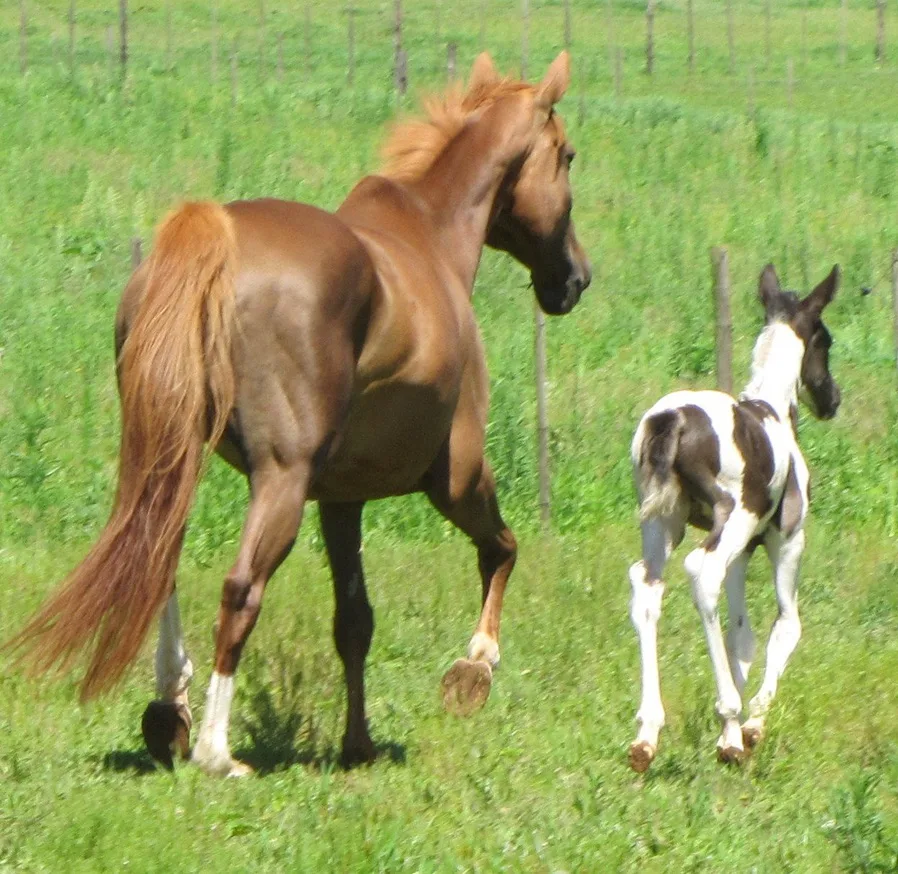
Understanding Foal Behavior and Development
In the world of equines, the early days of a foal’s life are not only captivating but are also filled with rapid developmental milestones. Drawing from my extensive experience with these majestic creatures, I’ve gathered insights into the early behavior and development of foals and the integral role of the mare in these formative days.
Early Foal Behavior and Development Milestones
- Standing and Walking: After the initial successful attempt at standing, foals quickly learn to walk. This is crucial for nursing and developing muscle strength. Within hours, they often exhibit a surprising level of coordination and curiosity about their surroundings.
- Nursing and Sleeping Patterns: Newborn foals nurse frequently, sometimes as often as every 30 minutes. They also have high sleep requirements, resting in short bursts throughout the day and night. This frequent nursing and sleeping cycle supports their rapid growth and development.
- Sensory and Social Development: Foals are born with a well-developed sense of hearing and smell, which they use to bond with their mother and become familiar with their environment. They also begin to exhibit early social behaviors, showing interest in other horses and humans.
- Playfulness and Exploration: As foals grow, usually within a few weeks, they become more playful and adventurous. This play is critical for their physical development and learning social cues and herd dynamics.
The Mare’s Role in the Foal’s Early Life
- Teaching and Protection: The mare plays a vital role in teaching the foal essential skills. She guides it in learning how to graze, drink water, and interact with other herd members. The mare is also the primary protector of the foal, often seen keeping a watchful eye and positioning herself between the foal and any perceived threats.
- Bonding and Comfort: The mare provides comfort and security to the foal. This bond is evident in their interactions, with the foal often seeking the mare for comfort and reassurance.
- Discipline and Socialization: As the foal grows, the mare begins to teach boundaries and appropriate behavior. She plays a crucial role in the socialization process, introducing the foal to herd dynamics and equine social structures.
Observing and Supporting Development
For horse breeders and caretakers, observing these early stages of foal development offers invaluable insights. It’s essential to provide a safe, nurturing environment that allows for this natural progression. Regular health checks, balanced nutrition, and a safe, stimulating environment are key to supporting healthy growth and development.

Aftercare for Mare and Foal
Post-birth care is a critical component of ensuring the health and well-being of both the mare and her new foal. Drawing from decades of experience in equine care, I’ve learned that attentive aftercare can significantly impact the recovery of the mare and the healthy development of the foal. Here’s a comprehensive look at the essential aspects of aftercare.
Post-Birth Care for the Mare
- Health Monitoring: After foaling, it’s vital to monitor the mare for any signs of complications, such as excessive bleeding, fever, or signs of retained placenta. A postpartum veterinary check can help ensure that she is recovering properly.
- Nutritional Support: The mare’s nutrition post-birth should be carefully managed. She needs a well-balanced diet to recover from the birthing process and to produce sufficient milk for the foal. High-quality forage, along with a balanced mix of grains and minerals, is typically recommended.
- Rest and Recovery: Providing the mare with a clean, quiet, and comfortable environment is crucial for her rest and recovery. She should have enough space to move freely, yet the area should be safe for both her and the foal.
- Reintroduction to Exercise: Gradual reintroduction to exercise is important for the mare’s physical health and well-being. Light walking can be beneficial in the first few weeks postpartum.
Ongoing Care and Monitoring of the Foal
- Health Checks: Regular veterinary check-ups are important to monitor the foal’s health. These checks typically include assessing growth, congenital health issues, and overall development.
- Vaccinations and Deworming: Adhering to a recommended vaccination schedule is crucial for the foal’s immune system development. Deworming is also an essential aspect of foal care, typically starting a few weeks after birth.
- Feeding and Nutrition: For the first few months, the foal will primarily rely on the mare’s milk. Introducing solid foods, like a specially formulated foal feed, begins around two to three months of age, gradually increasing as the foal grows.
- Socialization and Training: Early life socialization is vital for a foal. Exposure to different environments, people, and other horses helps in developing a well-adjusted, confident horse. Basic training like halter training, leading, and grooming should also begin early to establish good handling habits.
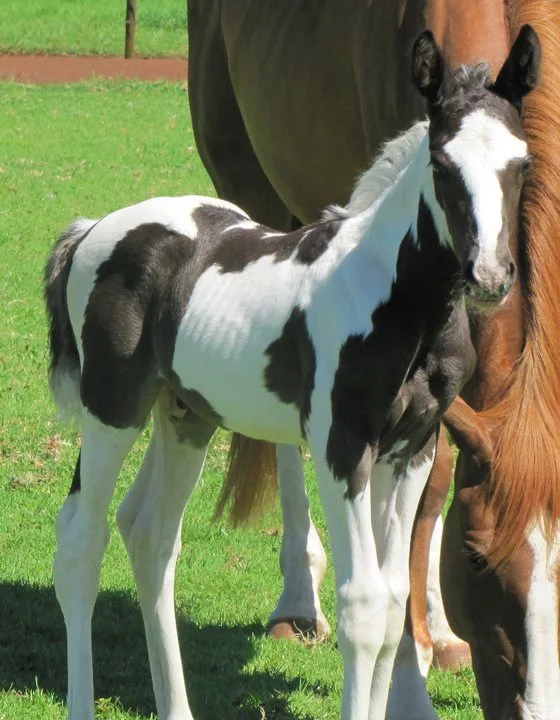
Reflections and Conclusions
As I draw this exploration of the birth and early life of a foal to a close, I find myself reflecting on the profound beauty and complexity of this natural process. Each foal’s arrival is a reminder of the incredible cycle of life that continues in the equine world, a cycle I have had the privilege to witness and participate in for many years.
The miracle of foal birth, with all its intricacies and wonders, never ceases to amaze me. From the first signs of the mare’s readiness to the foal’s tentative first steps, each moment is a testament to the resilience and grace of these magnificent creatures. The bond that forms between the mare and her foal is one of pure, unspoken understanding and affection, a beautiful sight that underscores the depth of connection possible between animals.
Through the years, each foaling experience has brought its unique lessons and joys. It has been a journey filled with anticipation, sometimes anxiety and heartbreak, but always immense satisfaction and learning. Watching a newborn foal stand, take its first breath, and begin to explore the world is an experience filled with awe and wonder, a poignant reminder of the cycle of life and the role we play in nurturing and protecting it.
As a caretaker and lover of horses, I’ve learned that while we may guide and support these animals, there’s so much they teach us in return – about strength, perseverance, and the sheer beauty of life in its most natural form. This journey of bringing new life into the world and nurturing it is not just about the physical care we provide. It’s also about the emotional connections we forge and the profound insights we gain into the essence of life itself.
I invite you, my readers, to share your own experiences and reflections on this remarkable journey. Whether you are a seasoned horse breeder or someone who admires these majestic animals from afar, your thoughts and stories are a valuable part of the larger tapestry of equine love and care. Please feel free to share your comments, experiences, or questions below. Together, let’s celebrate and honor the incredible journey of life that horses bring into our world.
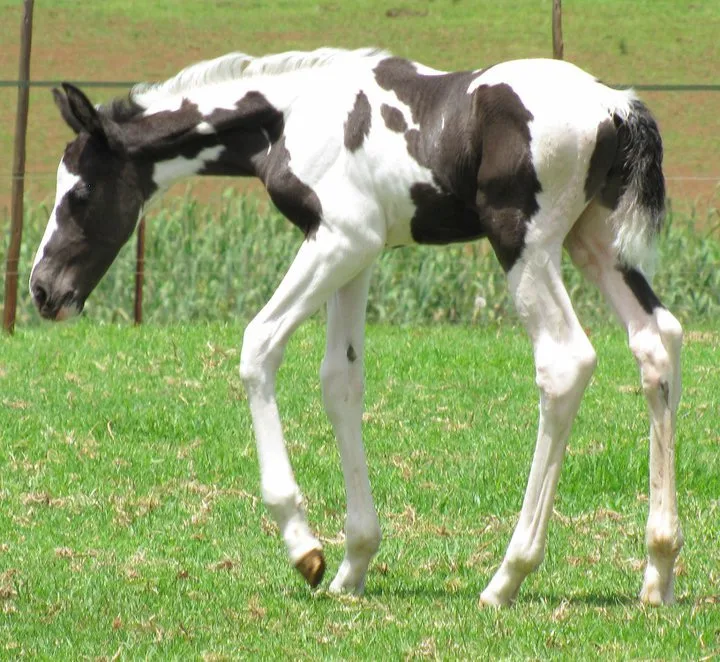
Additional Resources
For those eager to delve deeper into the world of equine birth and care, a wealth of resources is available. Whether you’re seeking detailed information, practical advice, or supportive communities, these resources can enhance your understanding and skills in caring for horses. Below are some recommended readings and websites:
- Books
- “The Complete Book of Foaling” by Karen E.N. Hayes, DVM: An invaluable guide for anyone involved in breeding, this book offers detailed instructions and insights into the foaling process.
- “Blessed Are The Brood Mares” by M. Phyllis Lose, VMD: This book is a classic in equine veterinary literature, providing comprehensive information on mare and foal care.
- Websites
- The Horse: Foaling Season (www.thehorse.com): A dedicated section on this website offers articles, videos, and webinars on foaling.
- American Association of Equine Practitioners (AAEP) (www.aaep.org): The AAEP provides resources and guidelines for horse health, including sections on mare and foal care.
- Online Courses and Webinars
- Equine Guelph’s “Mare and Foal Care Tool” (www.equineguelph.ca): An interactive online tool offering insights into mare and foal care.
- My Horse University’s Online Courses (www.myhorseuniversity.com): They offer a range of courses on horse care, including breeding and foal care.
- Forums and Community Groups
- Chronicle of the Horse Forum (www.chronofhorse.com/forum): A platform to discuss and share experiences with a community of horse enthusiasts.
- Local and national horse breeding clubs and associations: Joining these groups can provide access to experienced breeders and specialized knowledge.
- Veterinary Journals and Research Papers
- Journal of Equine Veterinary Science: Stay updated with the latest research and studies in equine veterinary science.
- PubMed (www.pubmed.gov): A resource for finding scientific studies and papers on equine health and foaling.
Remember, while these resources are informative and helpful, they should complement and not replace advice from your veterinarian or an equine care professional, especially in case of emergencies or specific health concerns.
Read on for What to watch out for in your newborn foal
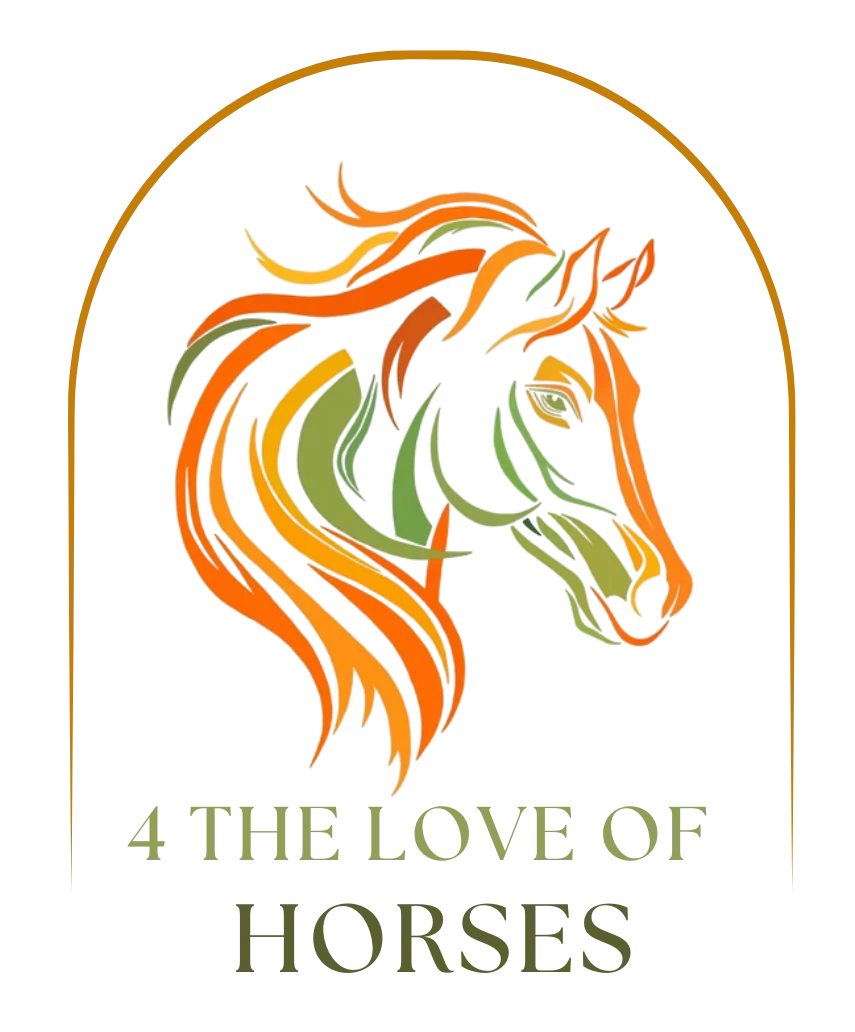
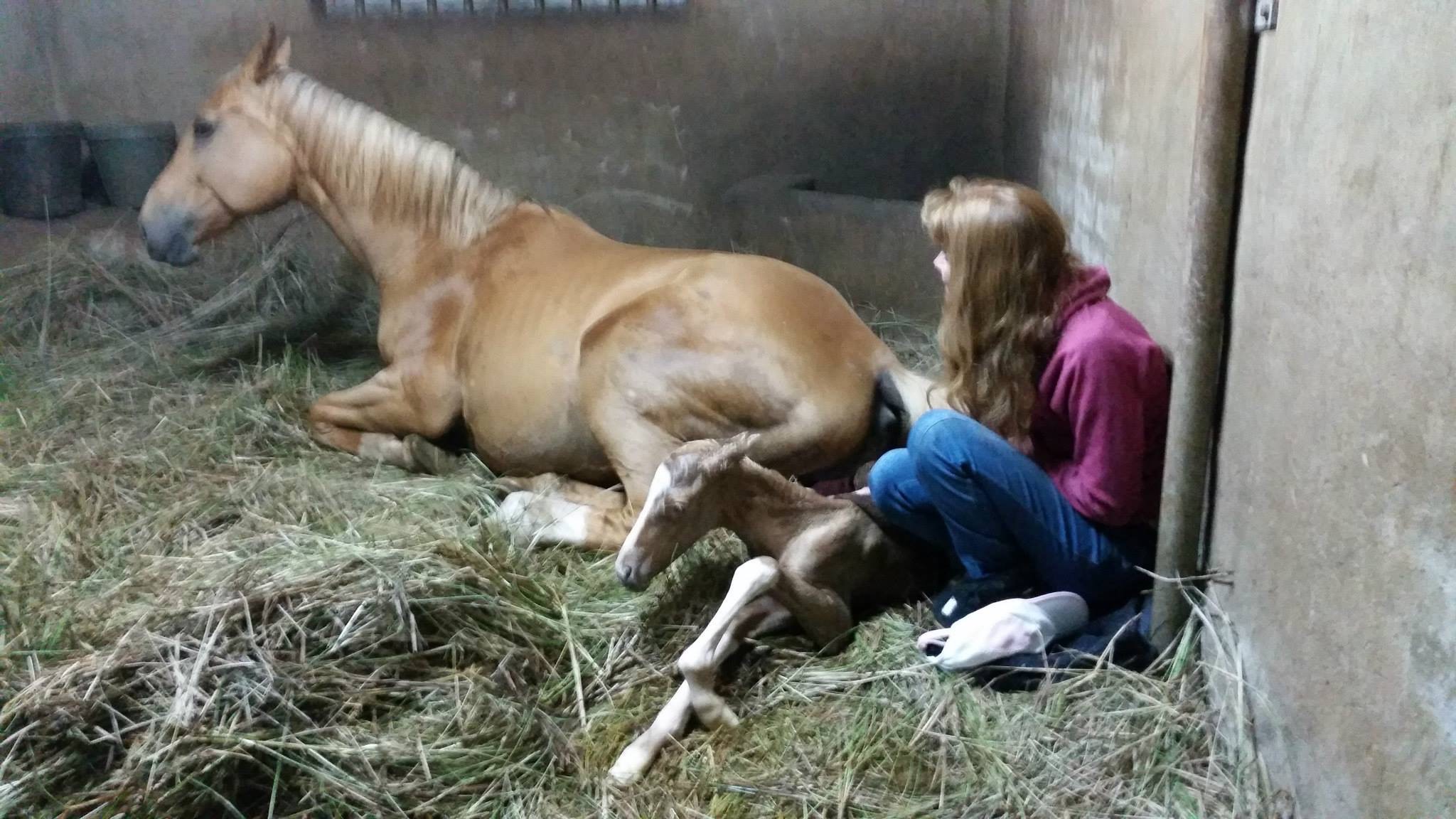


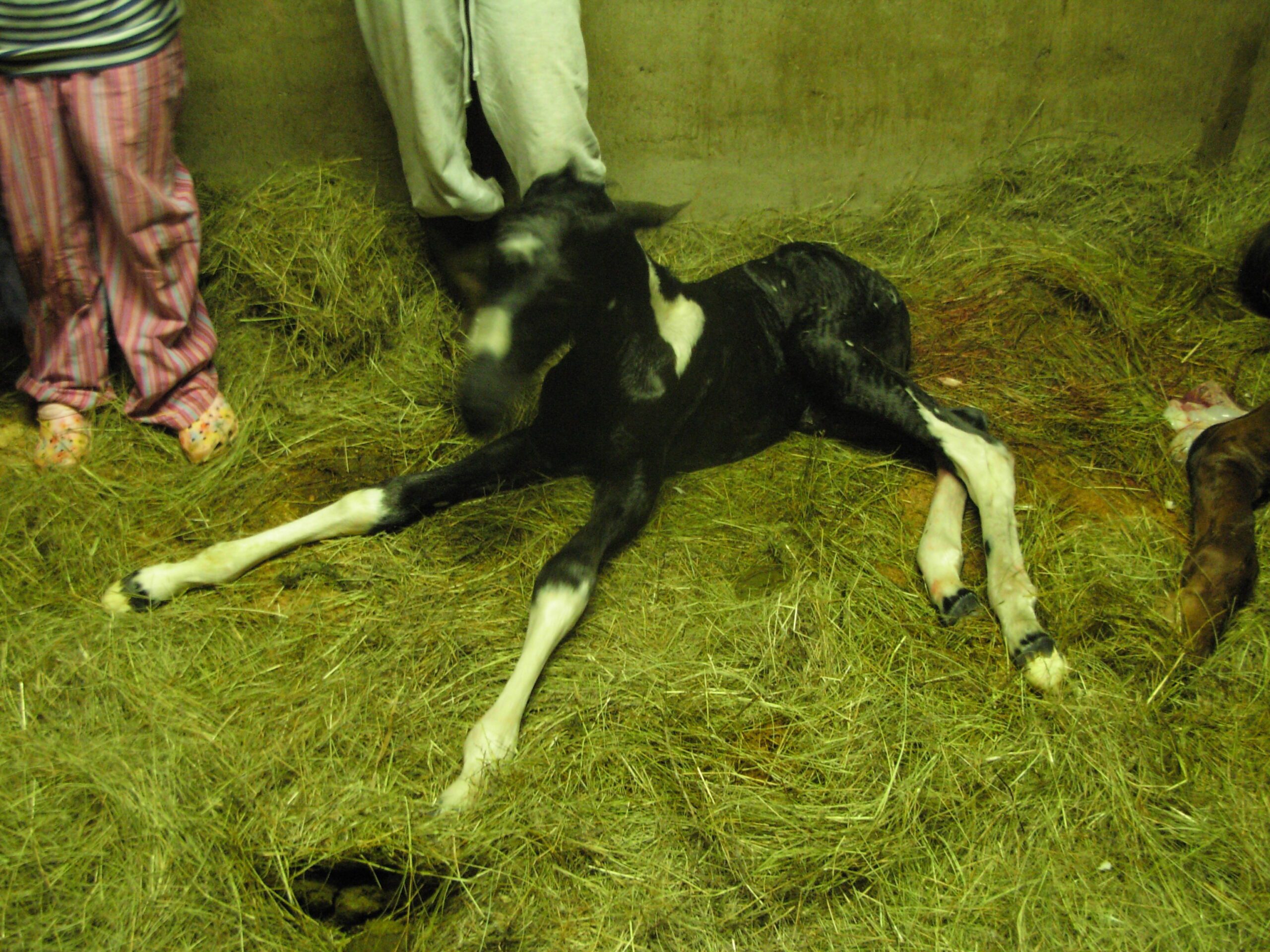
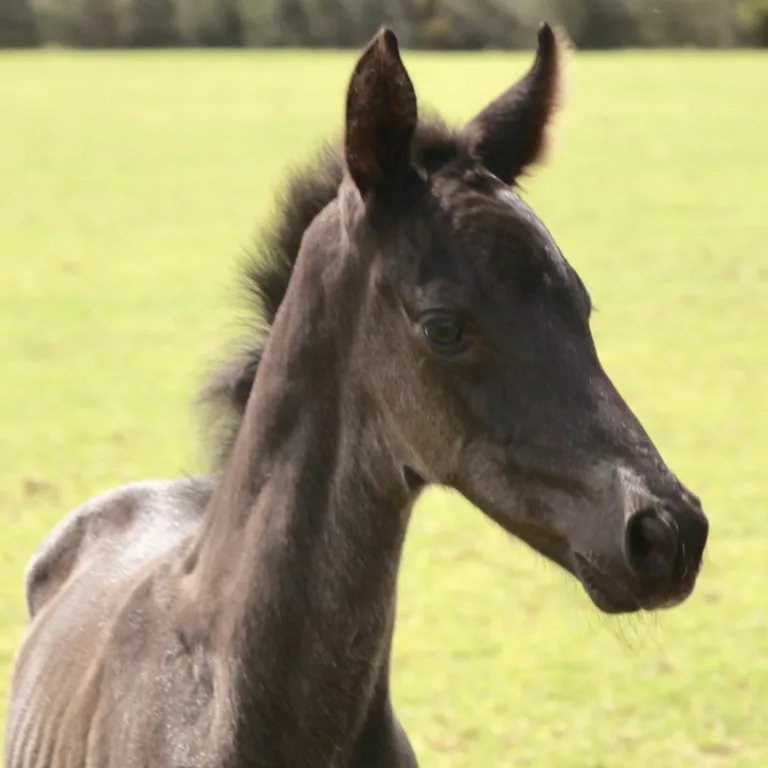

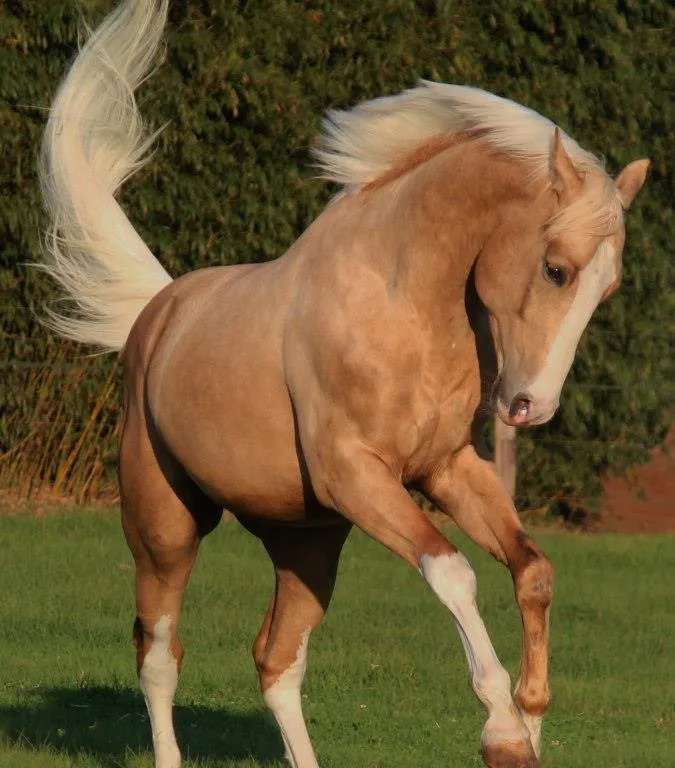
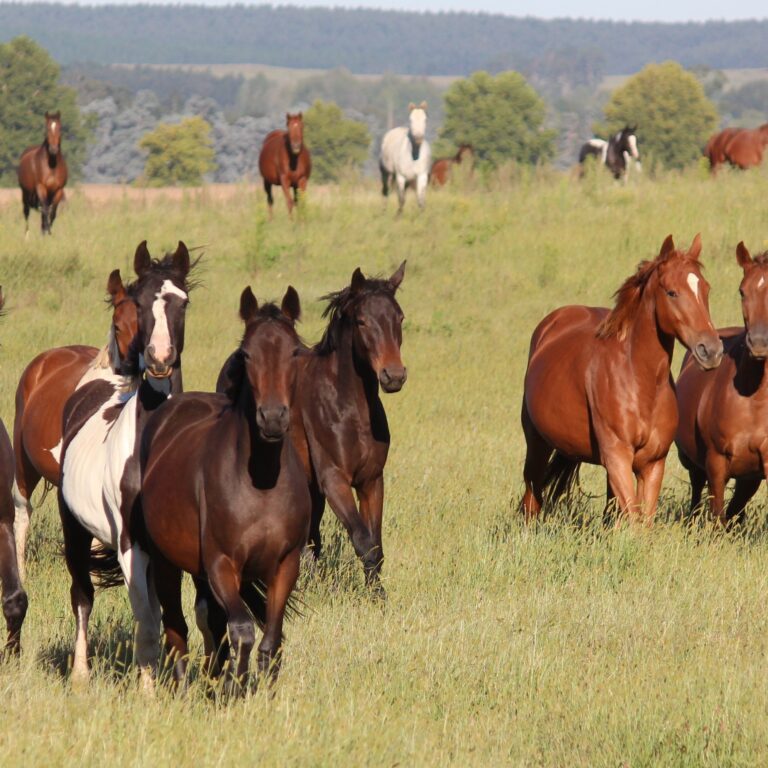
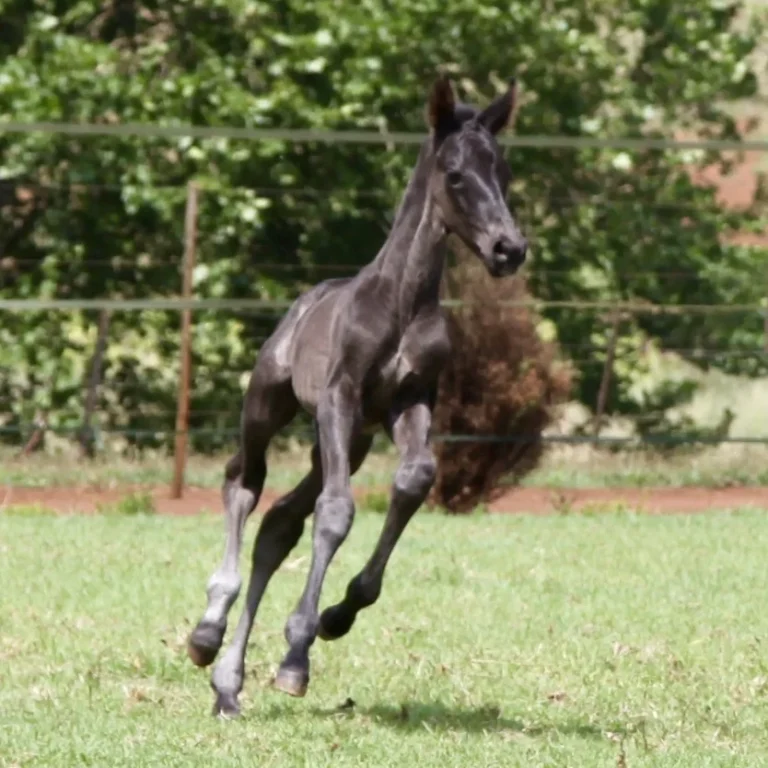

2 Comments